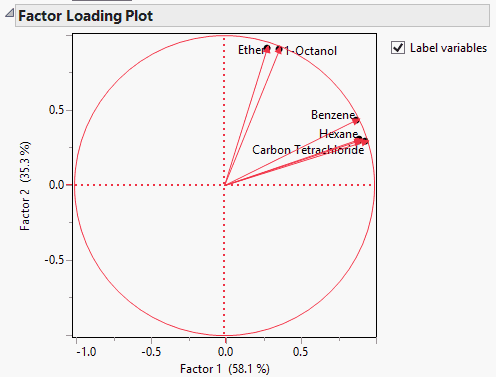Chapter 4
Factor Analysis
Identify Factors within Variables
Factor analysis (also known as common factor analysis and exploratory factor analysis) seeks to describe a collection of observed variables in terms of a smaller collection of (unobservable) latent variables, or factors. These factors, which are defined as linear combinations of the observed variables, are constructed to explain variation that is common to the observed variables. A primary goal of factor analysis is to achieve a meaningful interpretation of the observed variables through the factors. Another goal is to reduce the number of variables.
Factor analysis is used in many areas, and is of particular value in psychology, sociology, and education. In these areas, factor analysis is used to understand how manifest behavior can be interpreted in terms of underlying patterns and structures. For example, measures of participation in outdoor activities, hobbies, exercise, and travel, may all relate to a factor that can be described as “active versus inactive personality type”. Factor analysis attempts to explain correlations among the observed variables in terms of the factor. In particular, it allows you to determine how much of the variance in each observable variable is accounted for by the factors you have identified. It also tells you how much of the variance in all the variables is accounted for by each factor.
Use factor analysis when you need to explore or interpret underlying patterns and structure in your data. Also consider using it to summarize the information in your variables using a smaller number of latent variables.
Figure 4.1 Rotated Factor Loading

..................Content has been hidden....................
You can't read the all page of ebook, please click here login for view all page.
